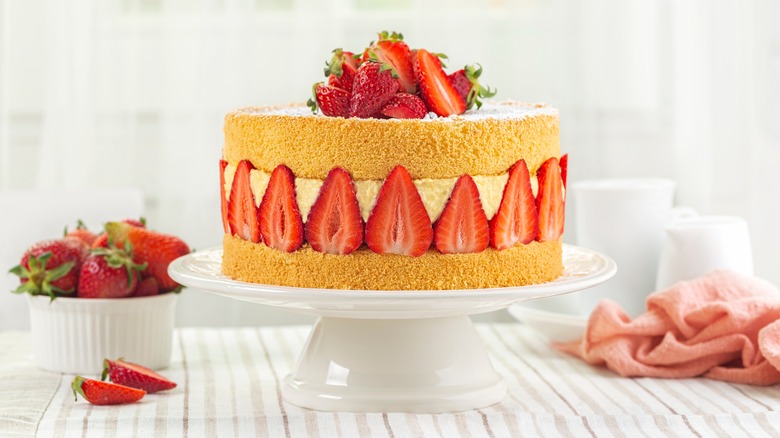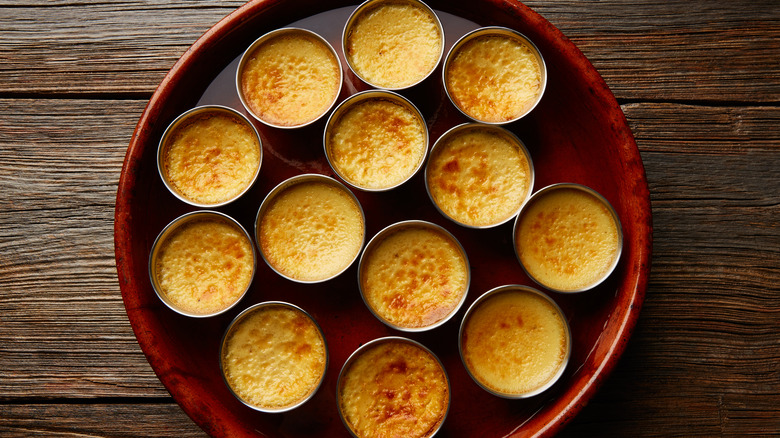What Happens When You Cook A Sponge Cake In A Bain-Marie?
Sponge cakes are some of the lightest cakes a baker can make. The cake got its strange name because of its unique, porous structure. Unlike traditional cakes, the sponge is made of whipped eggs, flour, and sugar which is what makes it so fluffy, explains MasterClass. Since the cake's original invention in Italy, the British have come to know it as a Victoria Sandwich with its sponge sliced neatly in half and the middle filled with classic cream and summer jam (via YouTube).
But the best things in life never come easy, and sponge cakes are notoriously difficult to bake. Prone to collapse in the oven because you opened the oven door too early, or simply turning out stodgy, the sponge cake can seem to be more trouble than it's worth. But, when made correctly this bake can be the crowning gem of a family picnic or garden party. To successfully pull off this tour de force, though, you might want to try a bain-marie.
Why a bain-marie?
According to MasterClass, the best way to prevent your sponge cake from turning out dry and deflated is by using a bain-marie. A bain-marie is a simple hot water bath that is commonly used to cook items that require a more gentle heating environment. This process is used to temper chocolate, make mousses, custards, and yes, a fantastic sponge cake! Using the bain-marie method ensures that light, fluffy dishes are kept moist and evenly baked.
Ultimate Omnoms tells us that a bain-marie will create steam in the oven, slowing the baking process and distributing the heat all the way around the cake, meaning that it will bake evenly. A slow bake, combined with the added moisture, makes a near-perfect environment for the sponge cake. This way, the bake doesn't expand too quickly and crack. By simply filling up the water bath to half the height of the baking pan, you can prevent this tricky sponge from collapsing.

